DBInline Complete 100 Hour Service Instructions (Part 4 of 4)
Jul 2022 orig.
Table of Contents
Recommendations and Warnings
Cane Creek recommends only trained suspension technicians perform service on all suspension, using all required tools and following all proper procedures. Anyone without access to the proper equipment or with any concerns on the procedures should defer to an authorized Cane Creek service center for service. Improper service can result in loss of performance or suspension failure. All Cane Creek shocks have pressurized nitrogen and oil, even coil shocks. Follow the service procedures exactly as written to avoid possible injury or harm to the suspension. Always wear eye protection while performing suspension service.
Please dispose of all waste products and materials through proper channels to avoid contamination of the environment.
Any damage or issues resulting from improper service will not be covered by warranty. If you have a shock still in its original warranty period and do not wish to void your warranty, please contact an authorized Cane Creek service center.
These service instructions cover the basic service procedures using standard service kits. If your suspension requires parts beyond standard replacement parts – shaft, damper tubes, end eyes – please consult your authorized Cane Creek service center or contact us at our Cane Creek Support Center.
Service Notes
As the predecessor of the Air IL, the two shocks share many service steps. Some images in these instructions may not be identical to the valve body or outer damper tube on the Inline, but that is only when the process is the same for the shock in the image and the shock on your bench.
Service Kits
BAD1214 – DBInline/DBair IL Damper Rebuild Kit (Standard)
BAD1185 – DBInline Air Spring Rebuild Kit
AAD1801 – DBInline Purple Fat Quad Piston (if needed)
Required Cane Creek Tools
AAD1101-01 – Keith Cradle
BCD0344 – Kitsuma/DBair/DBair IL Air Seal Head Tool
AAD1193 – Air Seal Head Bullet – Red (or original AAD1182 – Air Seal Head Bullet – Green)
BAD1459 – Air Piston Funnel
BAD1032 – Gland Nut Wrench
BAD1174 – Oil Seal Head Pin Spanner Wrench
BAD1268 – Inline – Oil Fill Needle Adaptor
DBT016 – DB Gas Fill Needle
AAD0555 – 8mm & 9.5mm Shaft Clamp
BAD1273 – Inner Damper Tube Install Tool (if replacing inner damper tube)
Additional Tools & Supplies
Allen wrenches – 1.5, 3 & 4mm
Torx wrenches – T10, T15 & T25
1/2″ crowfoot wrench
Torque wrenches
Pick
Suspension Grease
Royal Purple 10w-30 Oil
Motorex 4wt Racing Fork Oil
Vacuum Oil Fill Machine
Nitrogen Fill System
Torque, Loctite, Oil & Nitrogen Specs
Torque & Loctite Chart
| Part | Torque Spec | Loctite Spec |
|---|---|---|
| Shaft Bolt | 5 Nm | 243 (Blue) |
| TSN | 0.6 Nm | 668 (Green) |
| Spool Valve | 0.16 Nm | 243 (Blue) |
| Inner Damper Tube | 17 Nm | 263 (Red) |
| Oil Seal Head | 15 Nm | None |
| Gland Nut | 52 Nm | 243 (Blue) |
| Climb Switch Screw | 0.16 Nm | 243 (Blue) |
| Air Piston Screws | 3.2 Nm | 243 (Blue) |
| End Eye | 4.8 Nm | 243 (Blue) |
| Inner Air Can/Air Seal Head | 22.6 Nm | None (PolyLube) |
Oil Chart
| Oil Location | Oil Type | Oil Amount |
|---|---|---|
| Air Can | Royal Purple 10w-30 | 5 mL |
| Damper Fill | Motorex 4wt Racing Fork Oil | Fill to 3 Bars |
Nitrogen Chart
| Nitrogen Location | Nitrogen Pressure |
|---|---|
| Valve Body | 11 - 12 Bars |
Damper Fill
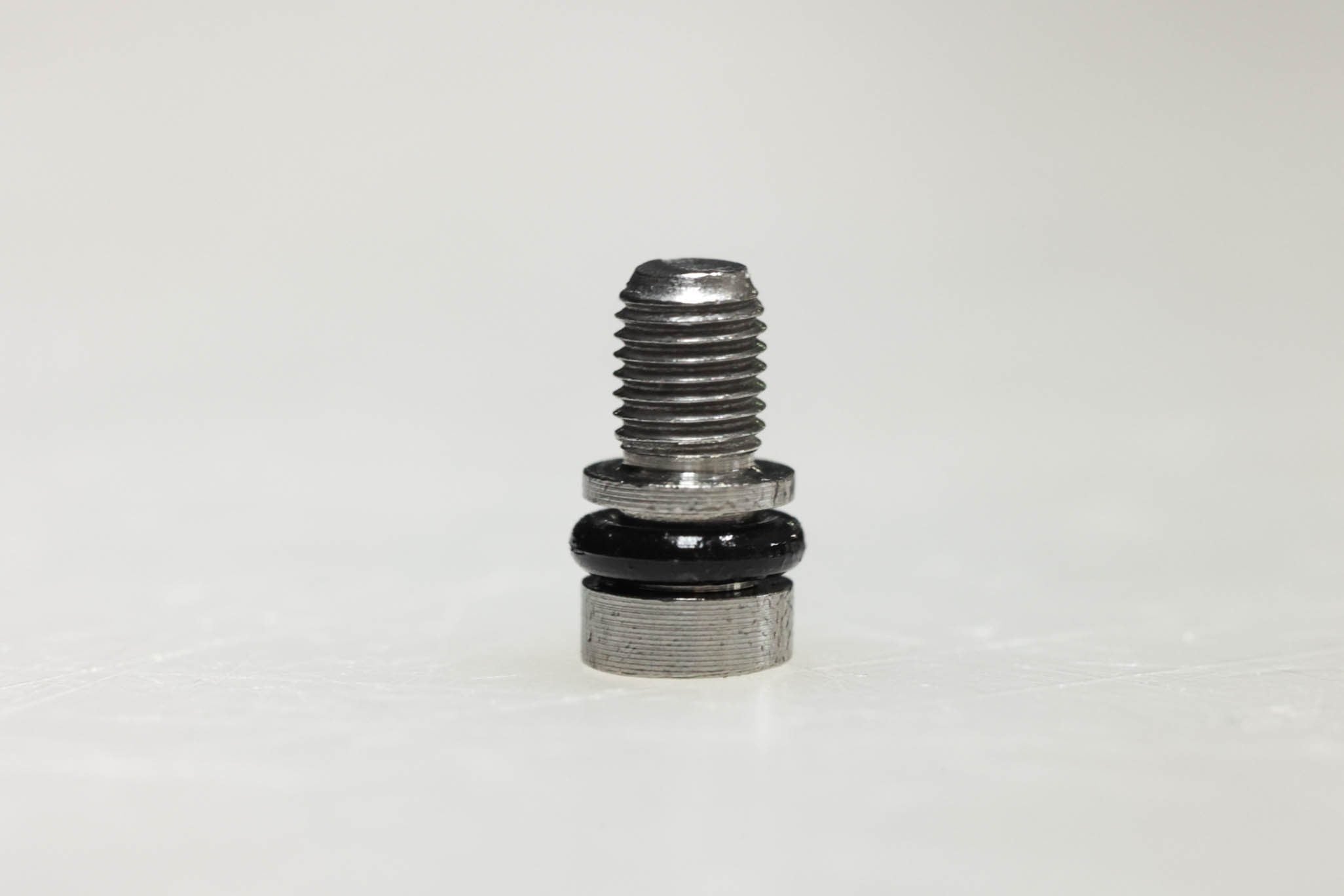
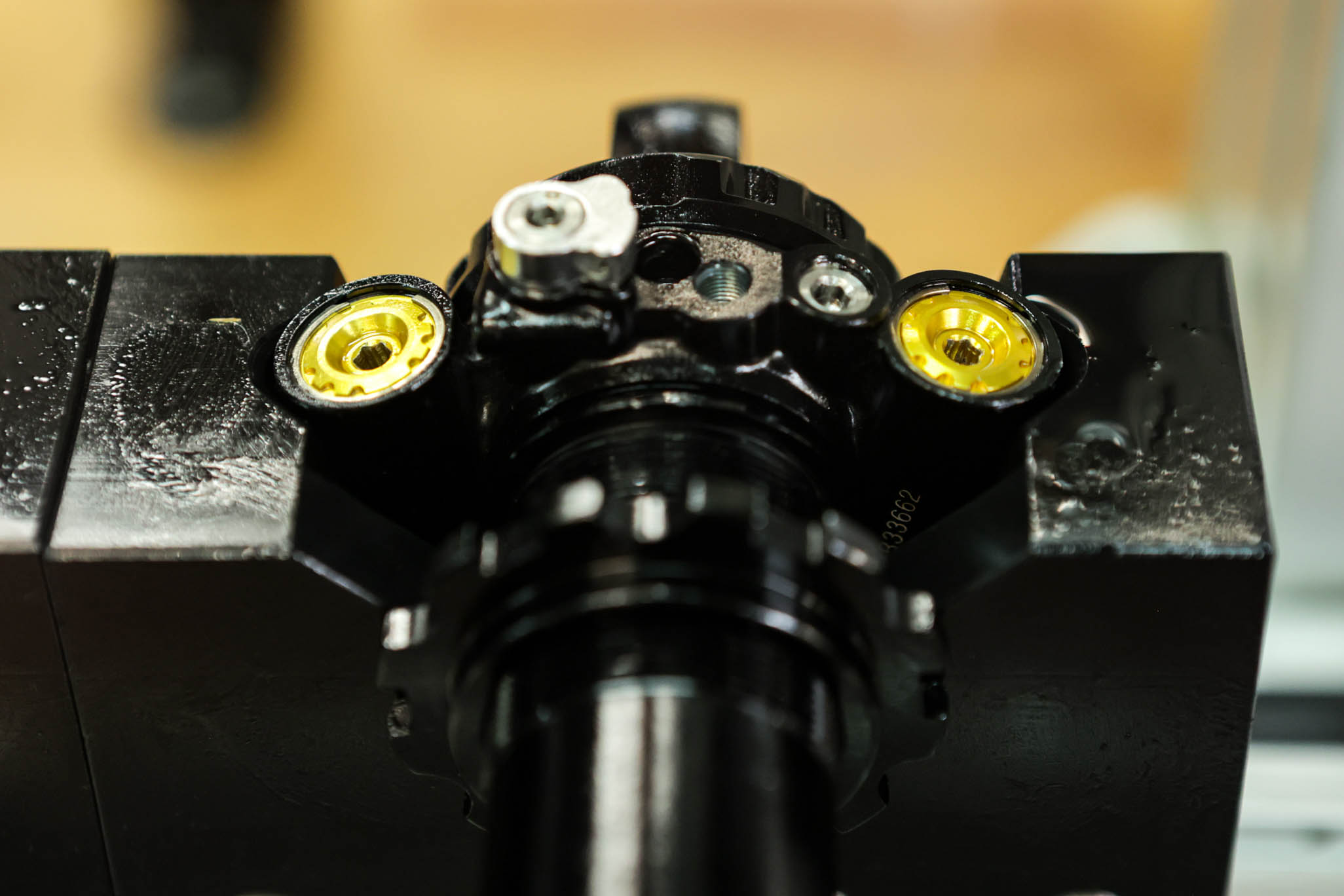
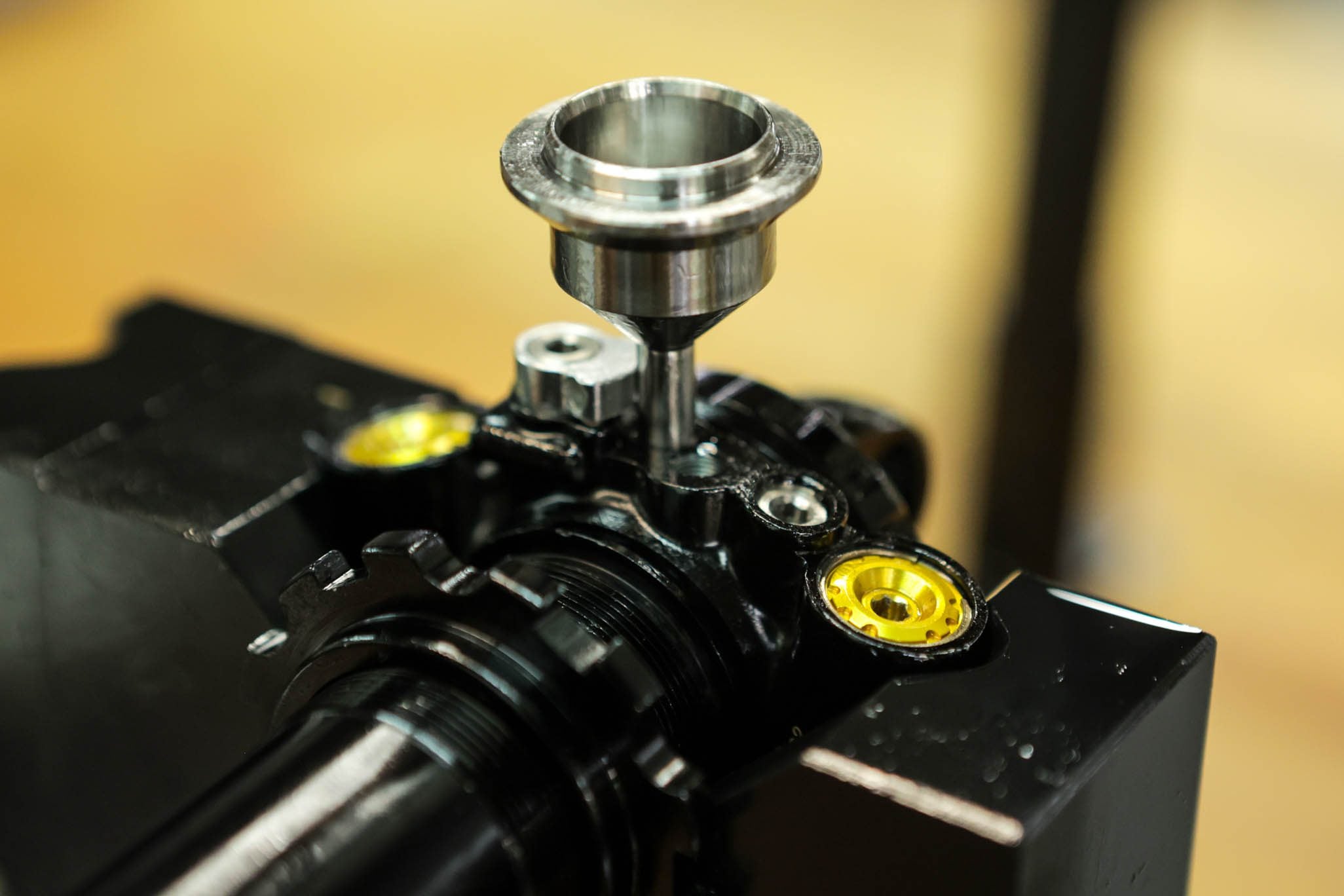
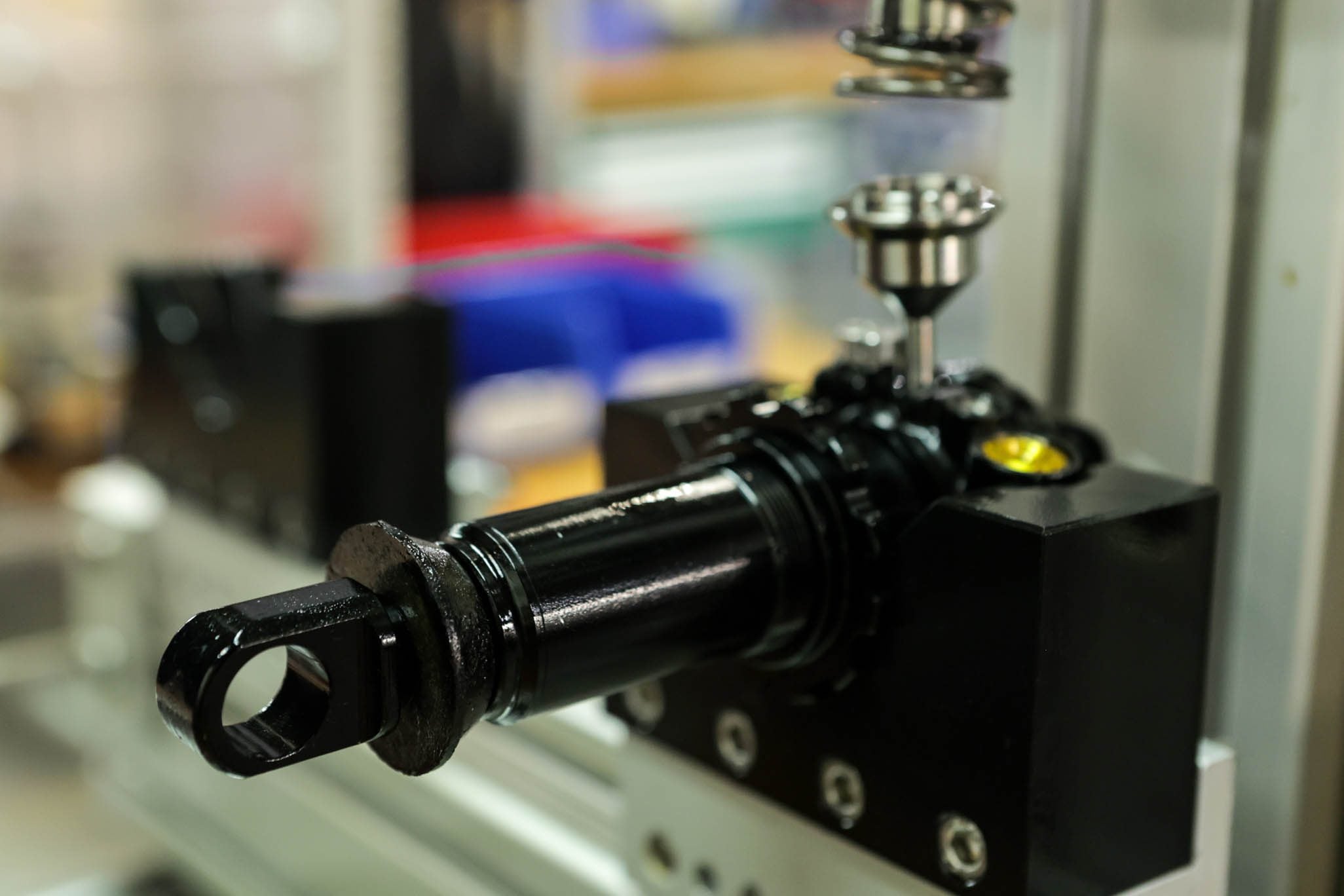
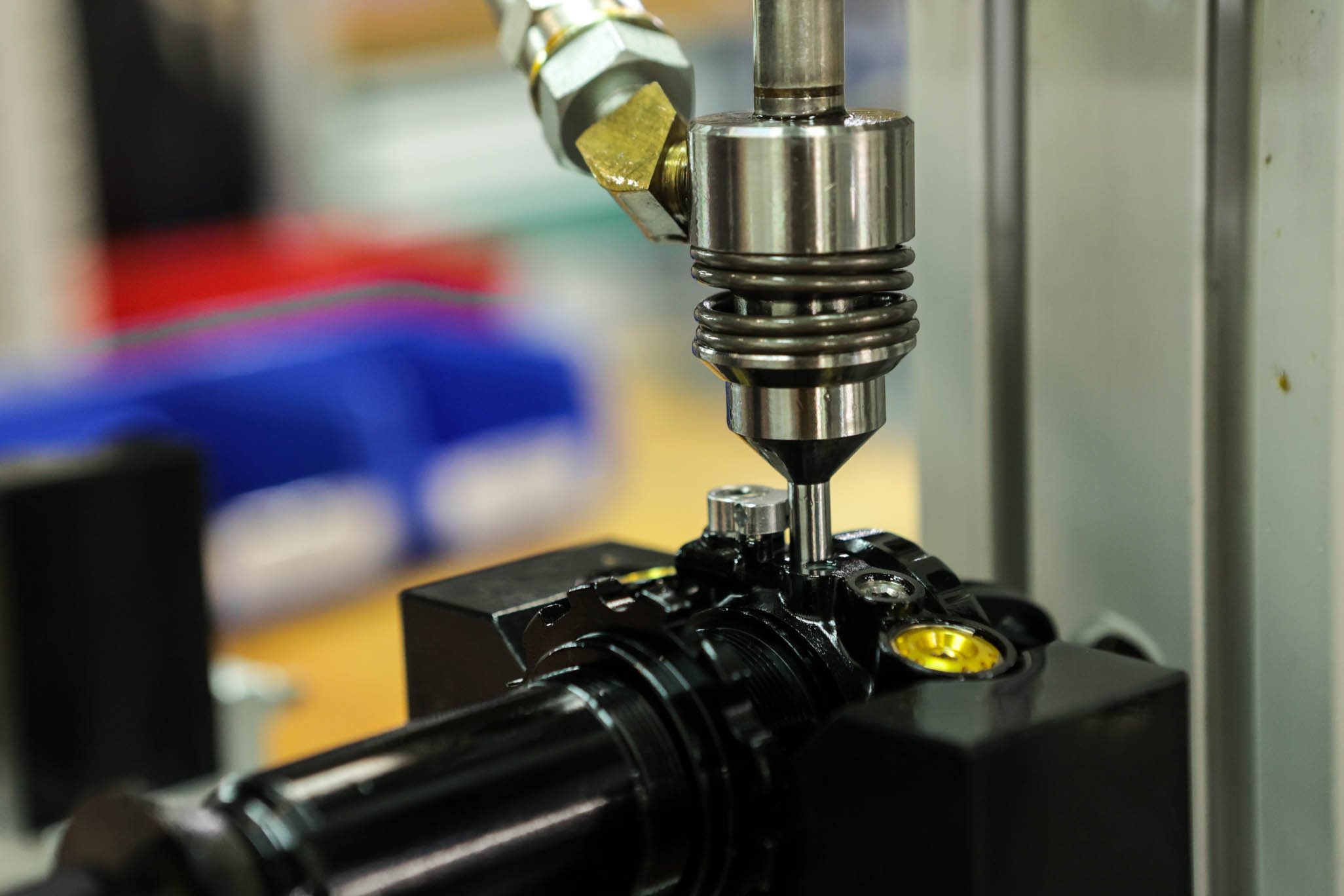
Step 1 – Prepping Shock for Fill
Install new o-ring (AAD0532) on fill plug screw. Temporarily install end eye on shaft. Secure shock in horizontal position with fill port facing up. Back all adjusters to fully open and open Climb Switch. Thread Inline oil fill adaptor (BAD1268) into fill port. Fully compress damper. Attach oil fill machine per your manufacturer’s instructions.

New O-Ring on Fill Screw

Valve Body Secured

Fill Adapter Attached

Shaft Compressed

Attached to Fill Machine

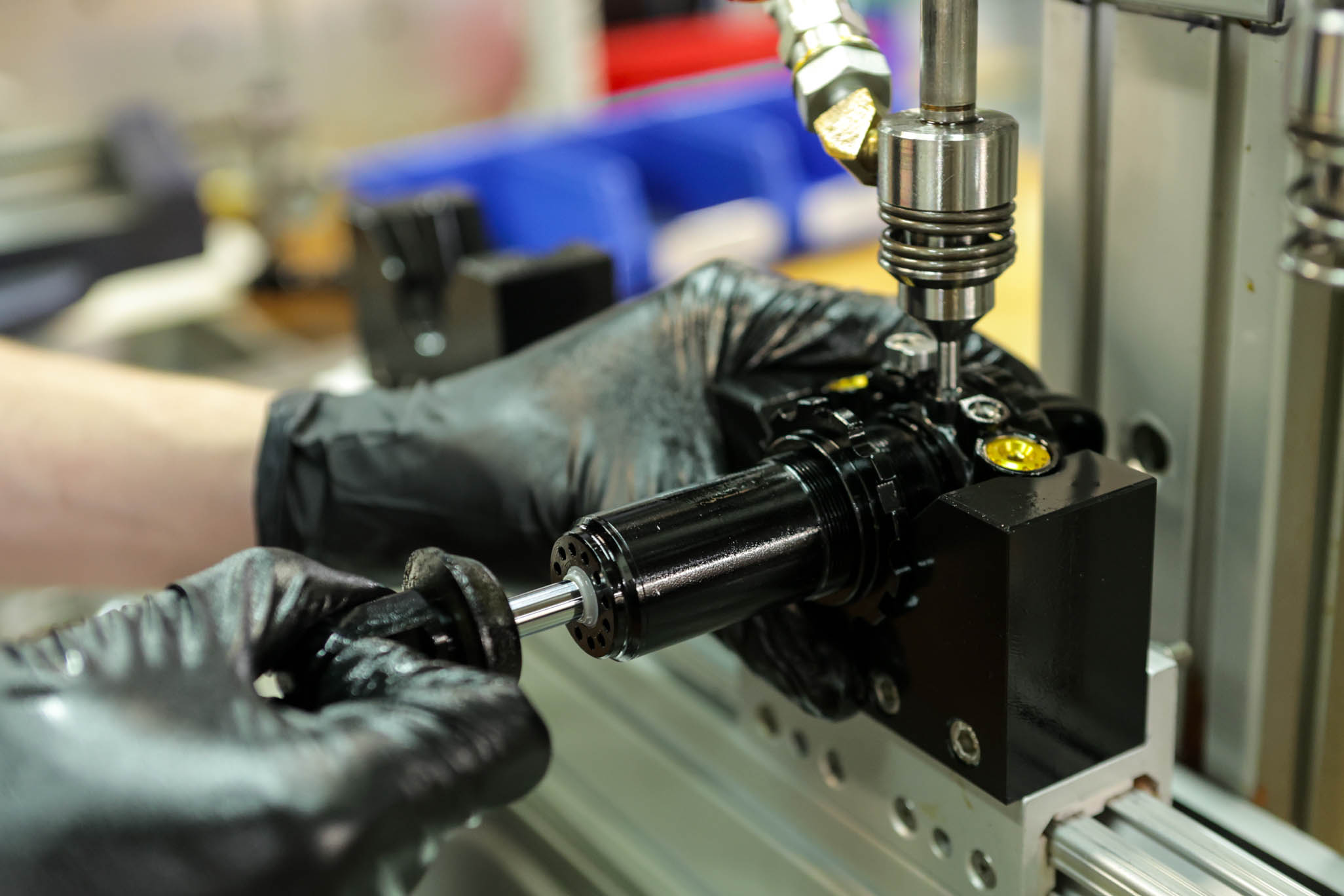
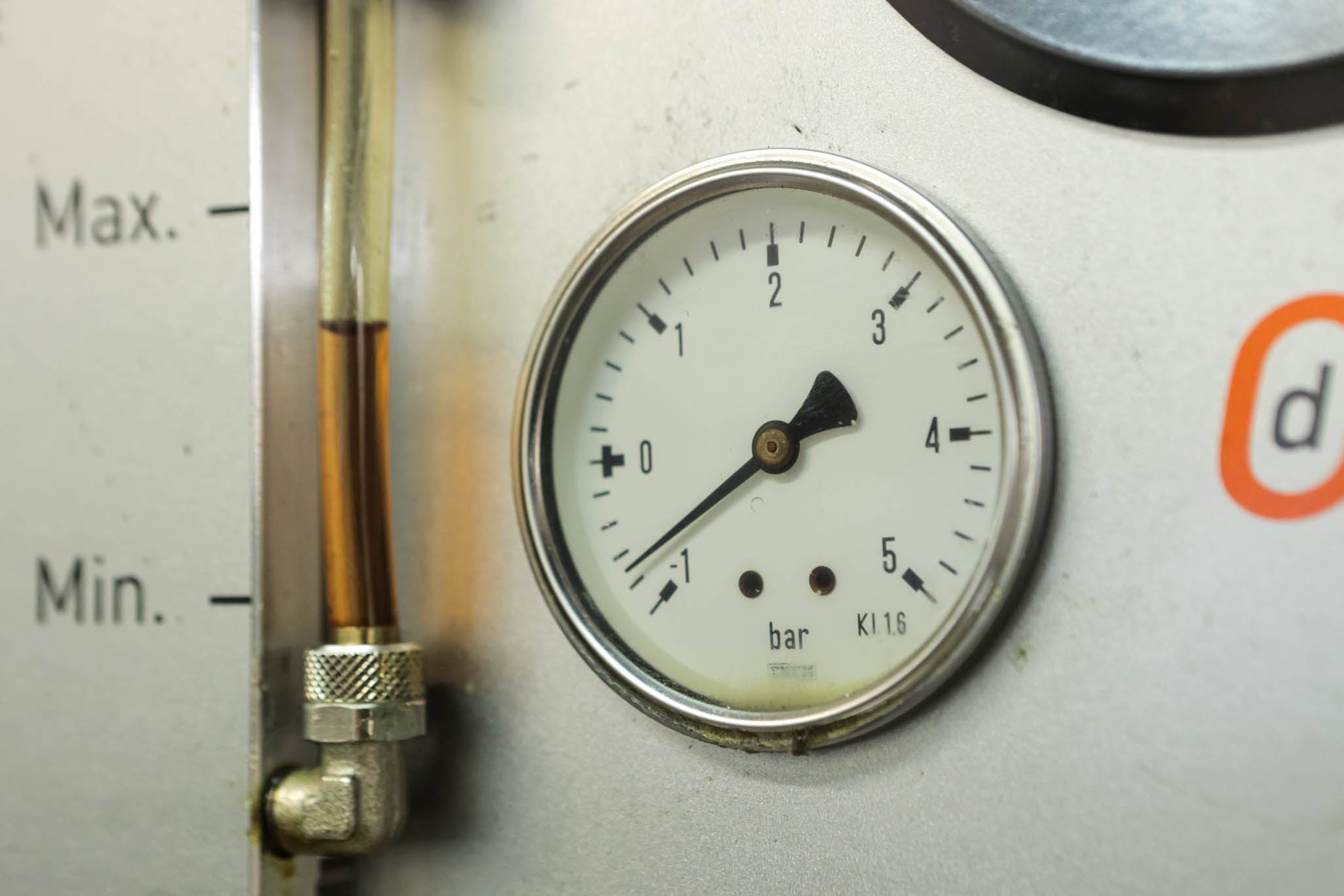
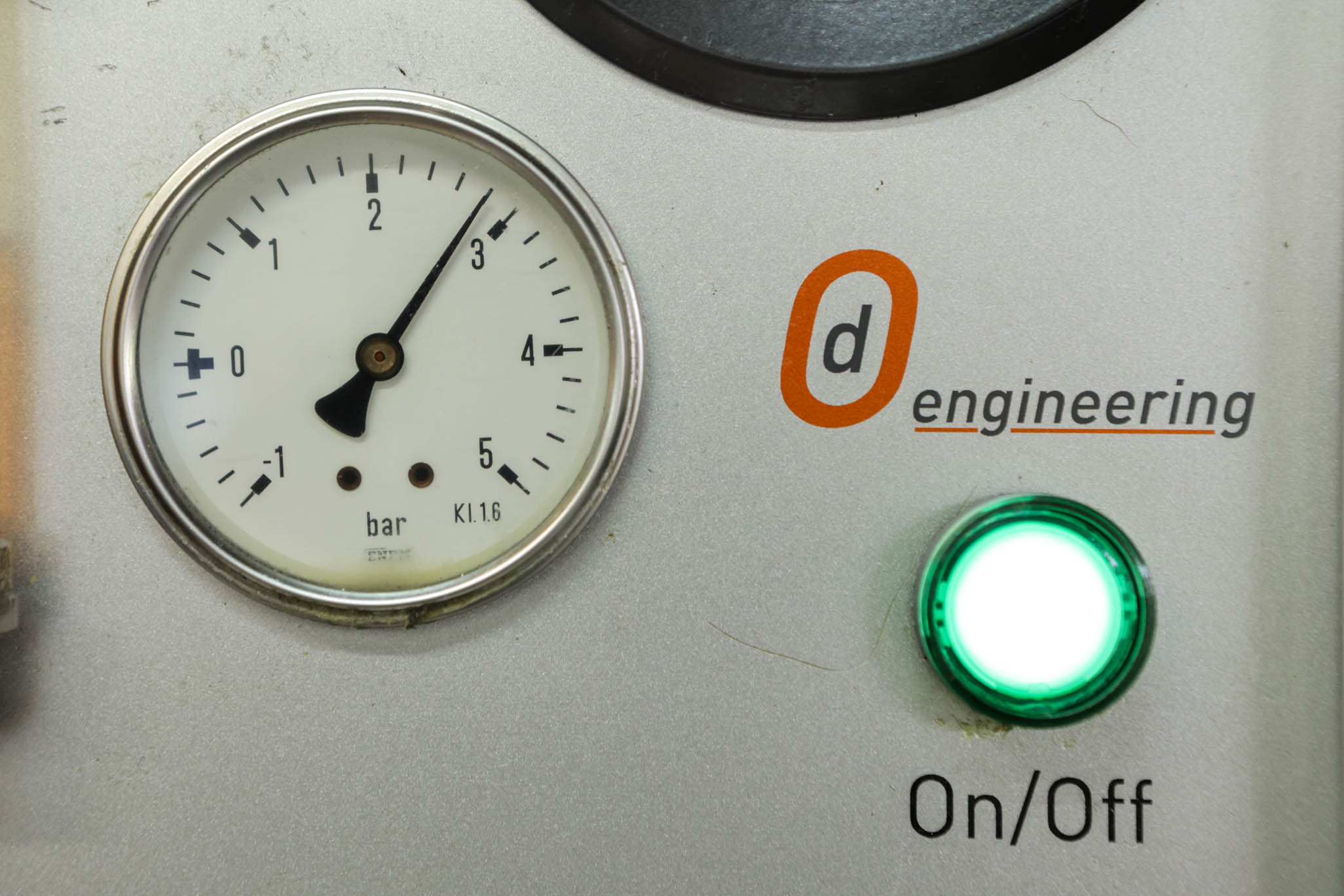
Step 2 – Vacuum and Oil Fill Process
Vacuum system to (4) mbar. Pressure with Oil to (3) bar. Slowly cycle shaft finishing with shaft fully out. Cut fill and equalize pressure. Vacuum system to (4) mbar, leaving shaft out. Pressure again with Oil to (3) bar. Slowly cycle shaft finishing with shaft fully out. Cut fill.

Vacuum System to (4) mbar

Cycling Shock

Oil Pre-Fill

Oil Fill to (3) bar
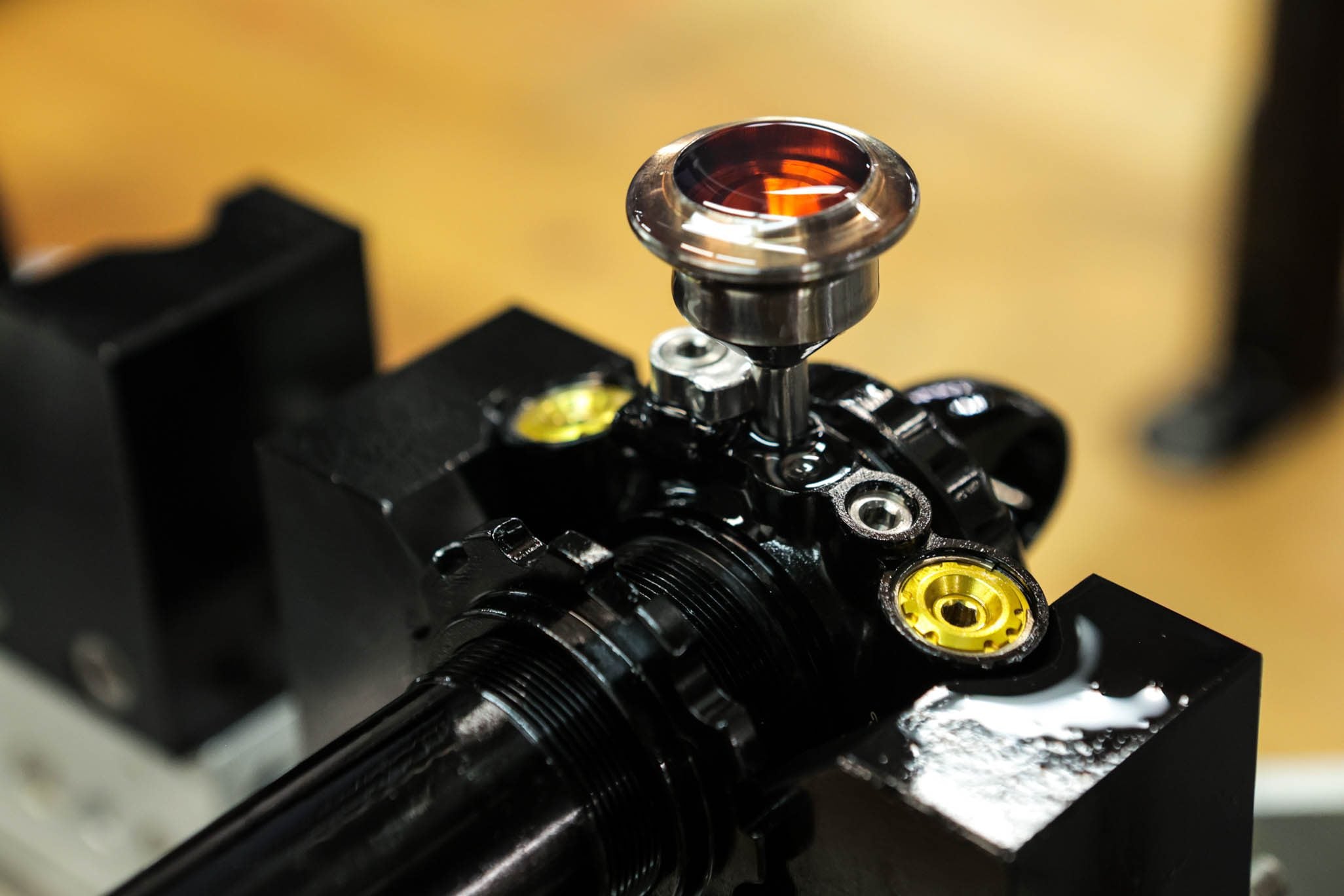
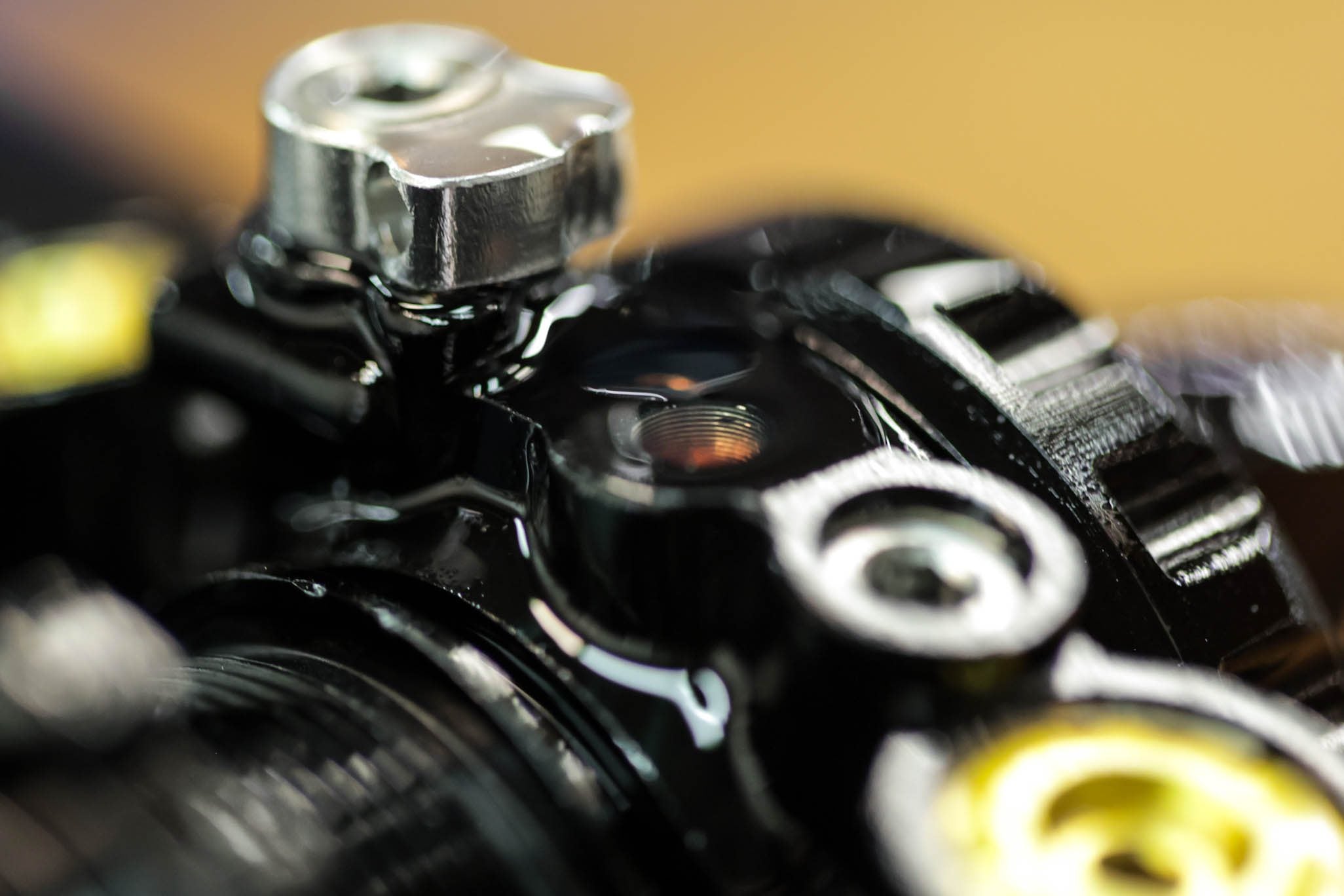
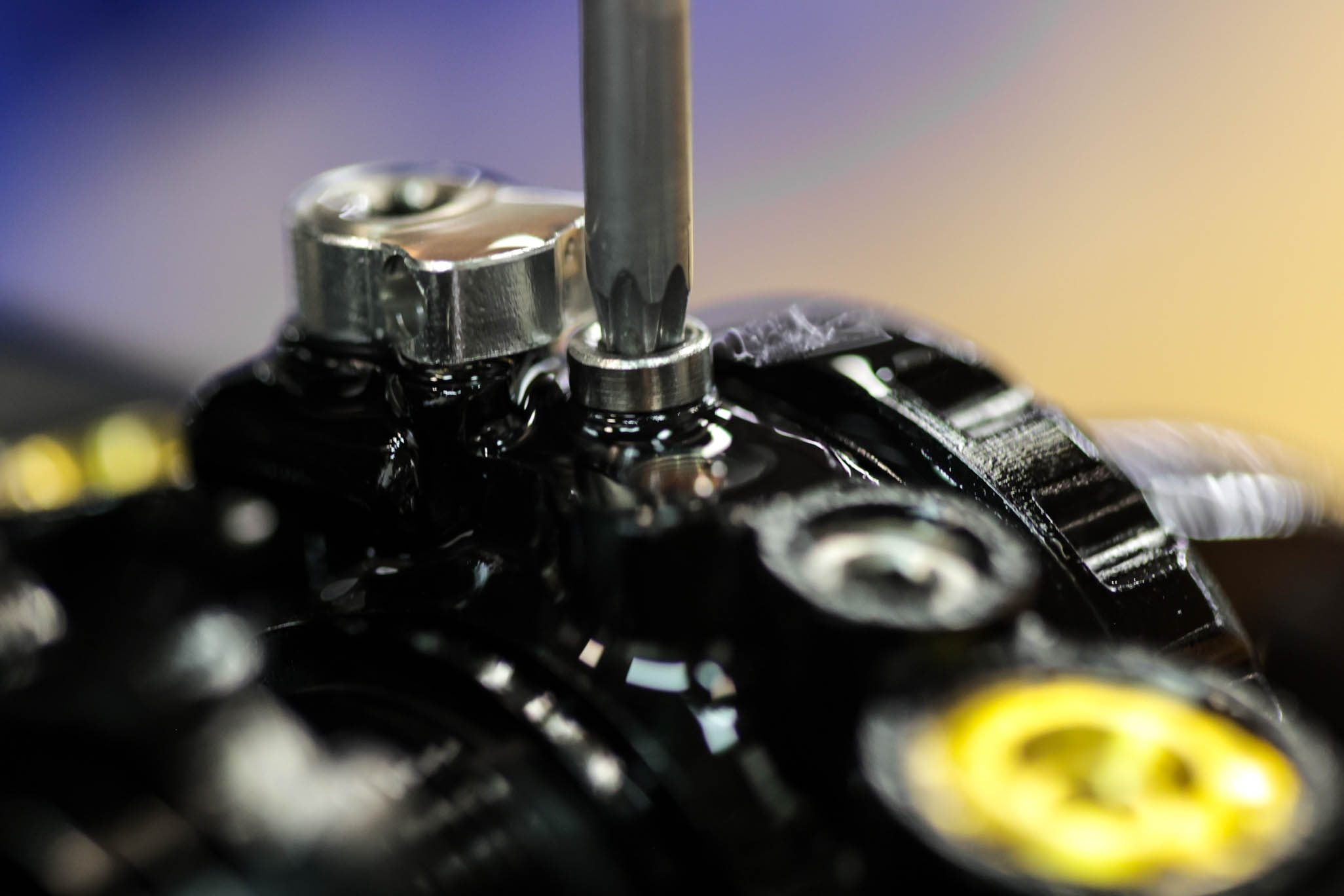
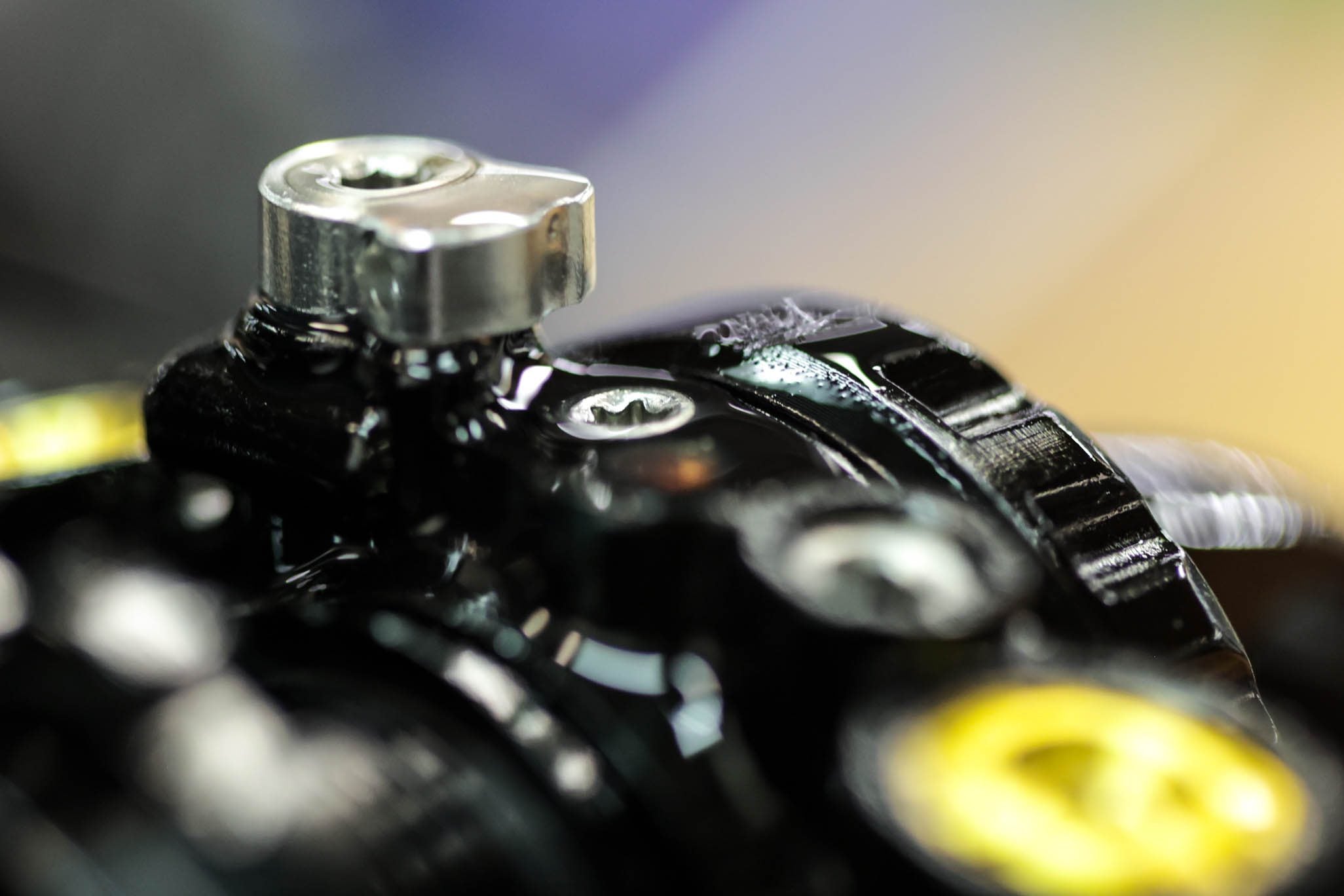
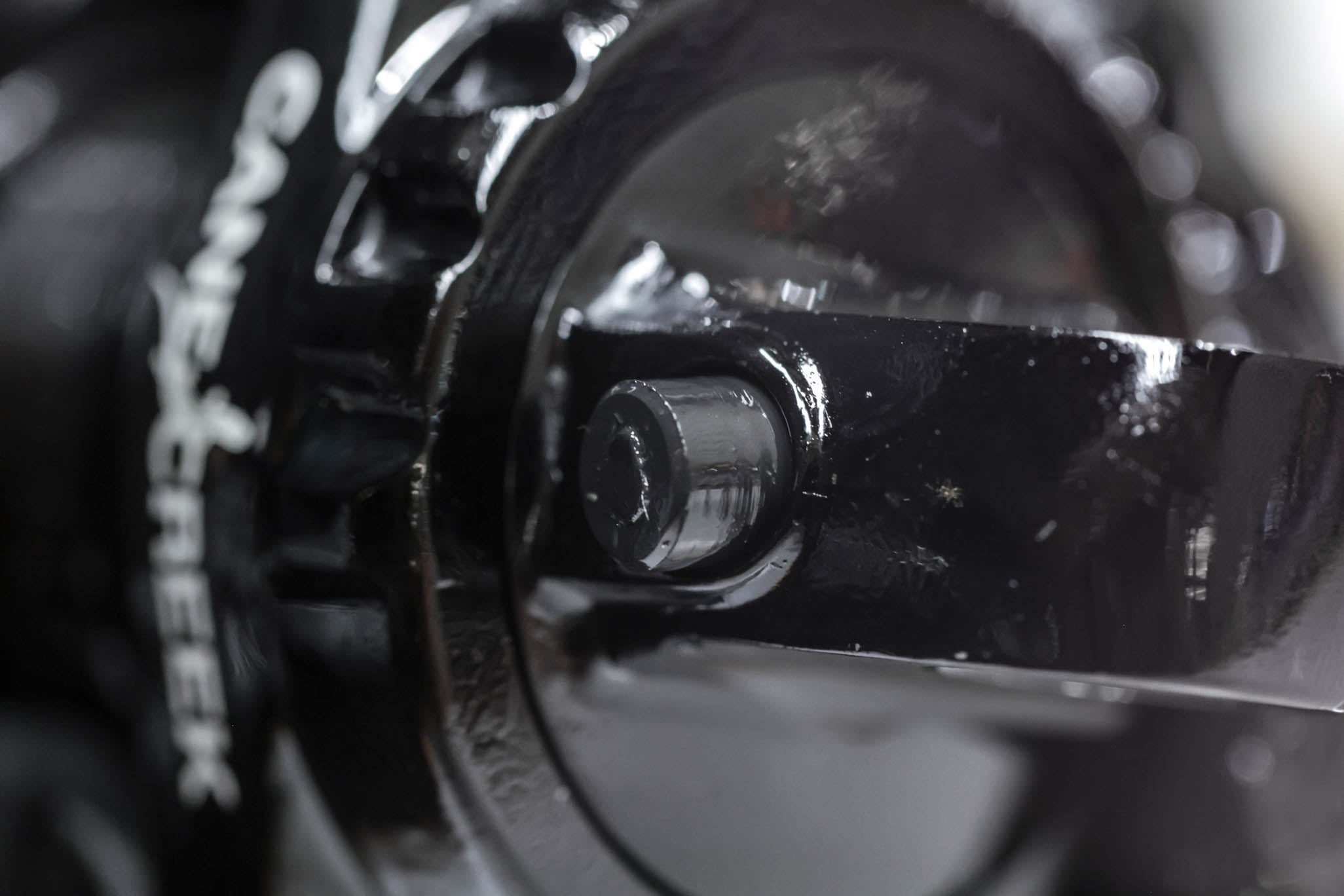
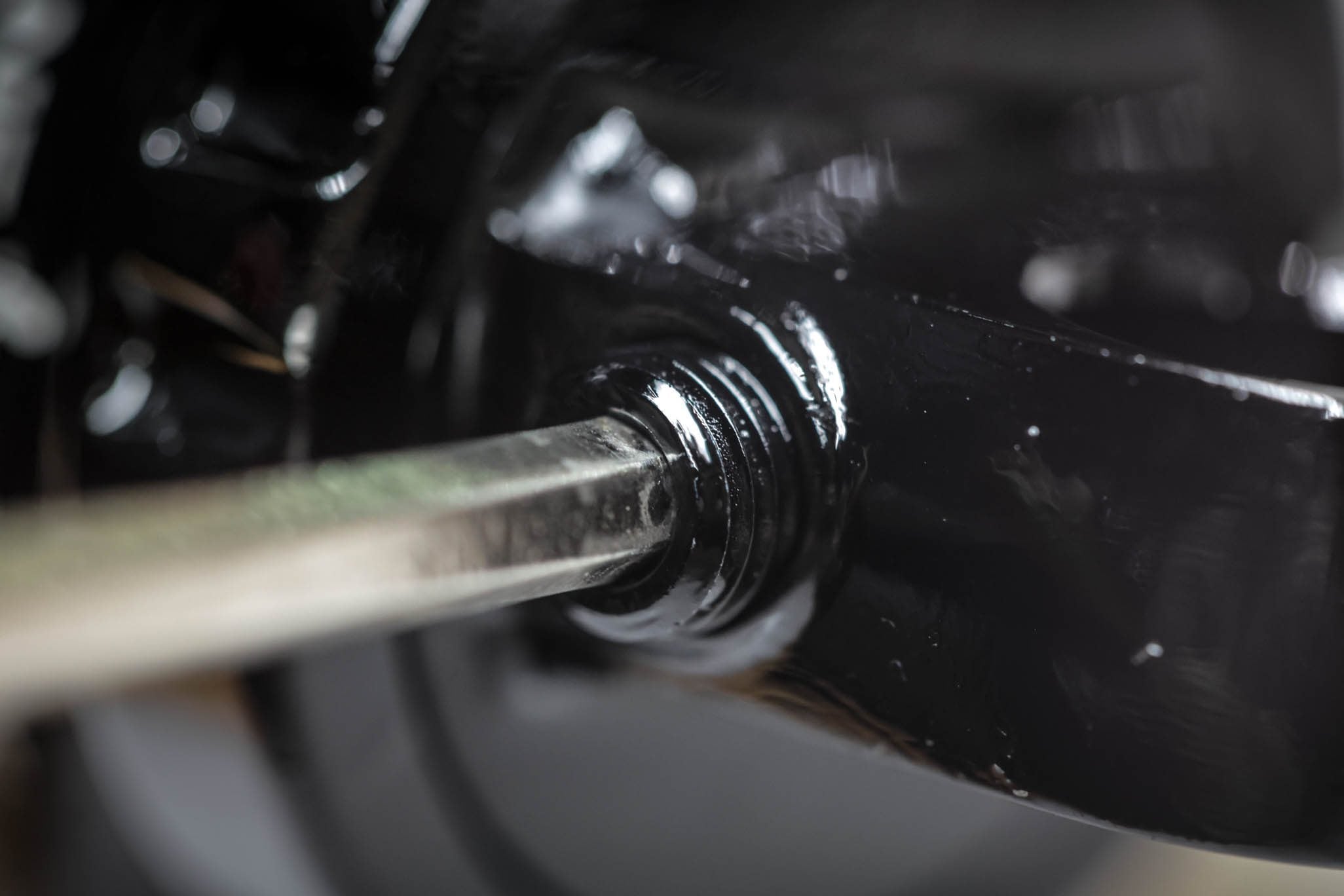
Step 3 – Valve Body Closure
Leaving horizontal, disconnect fill machine. Unthread fill needle. Drip some oil on to top of fill. Install oil fill screw with T15. Insert new gas fill plug (.DB11115) leading with beveled edge. Thread gas fill plug screw in, leaving 2 threads exposed outside of the end eye.

Disconnecting Fill Machine

Oil Overflow from Port

Installing Oil Fill Screw (Standard)

Oil Fill Screw Installed (Standard)

Install Gas Fill Plug (Standard)

Threading Gas Fill Plug Screw (Standard)
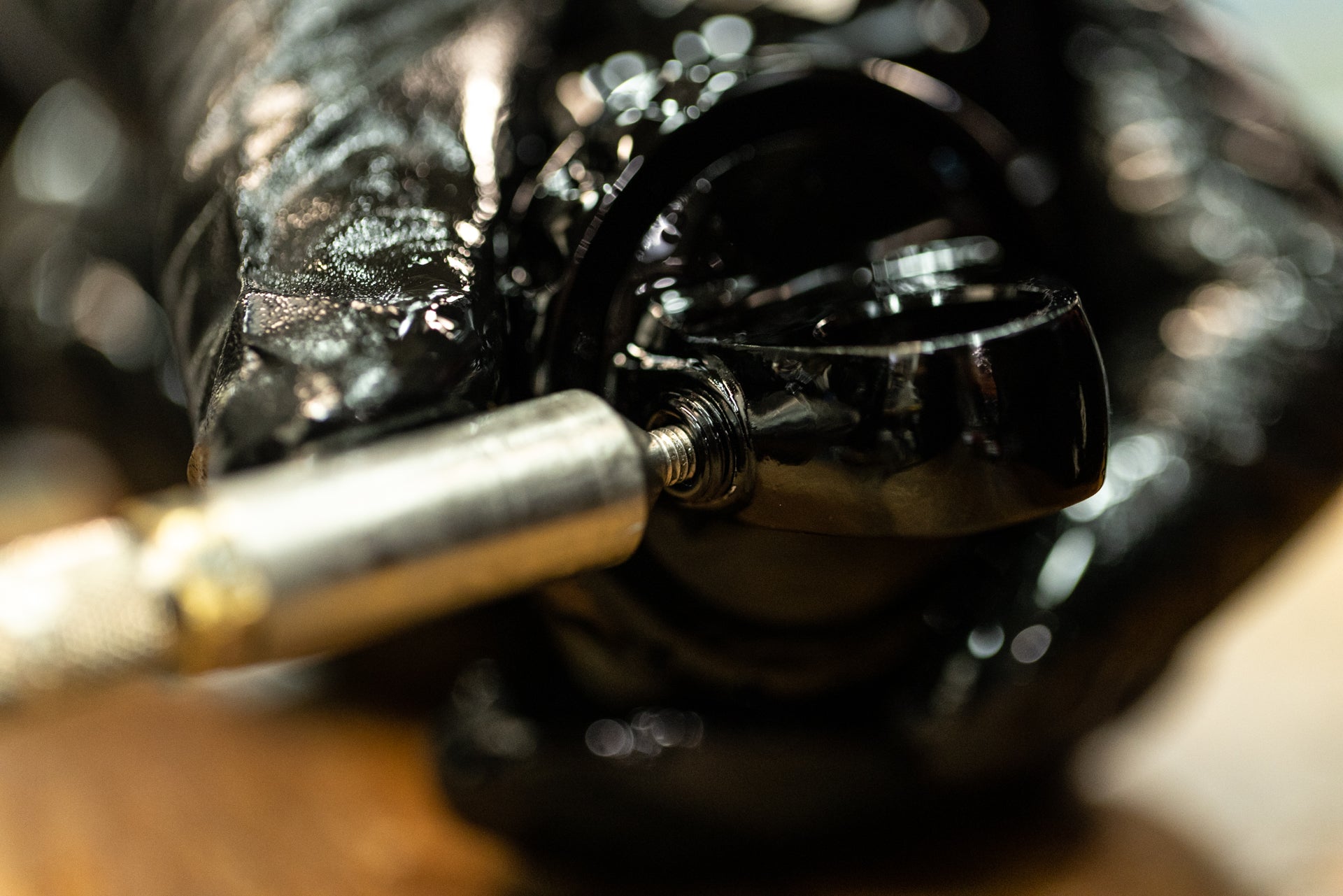
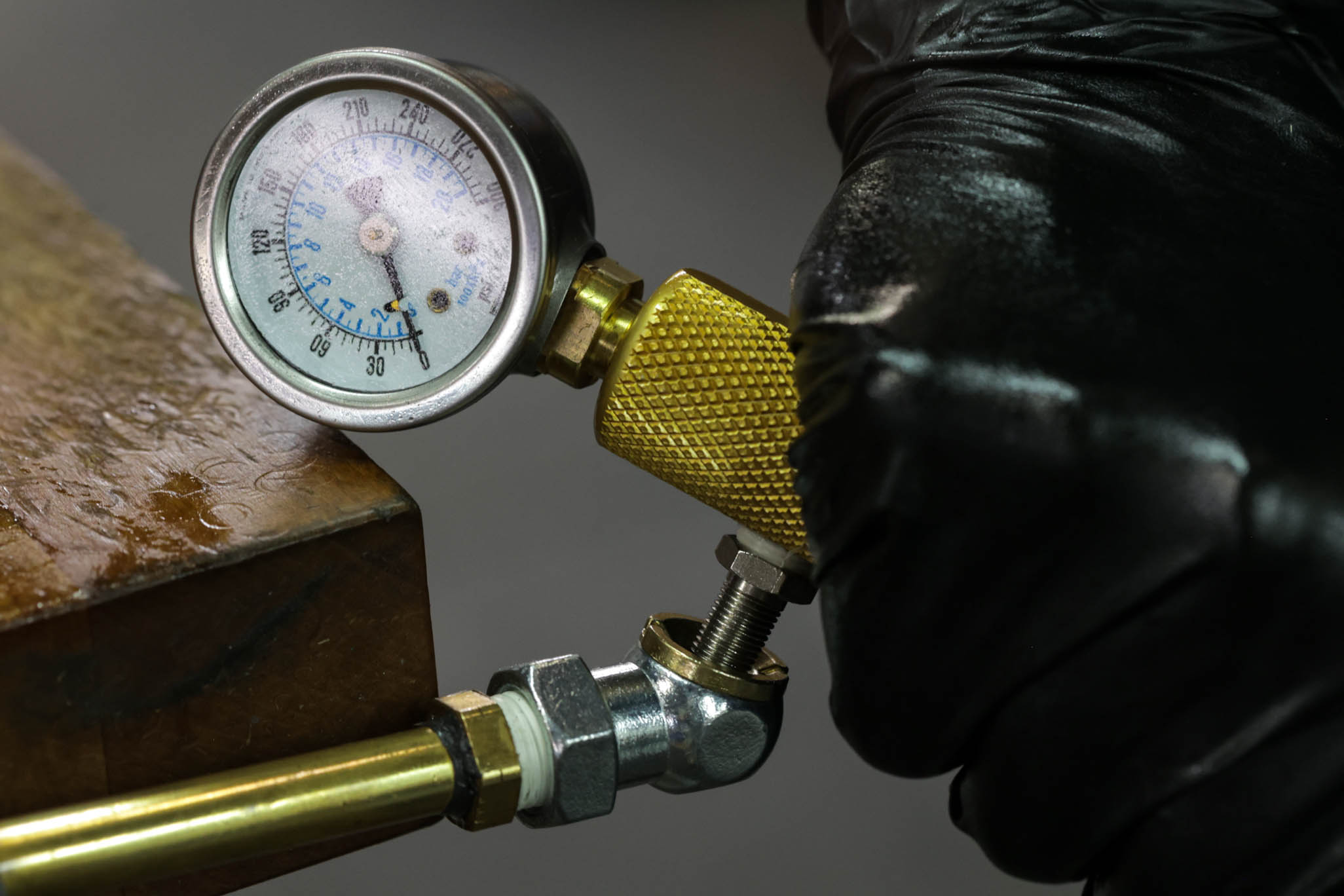
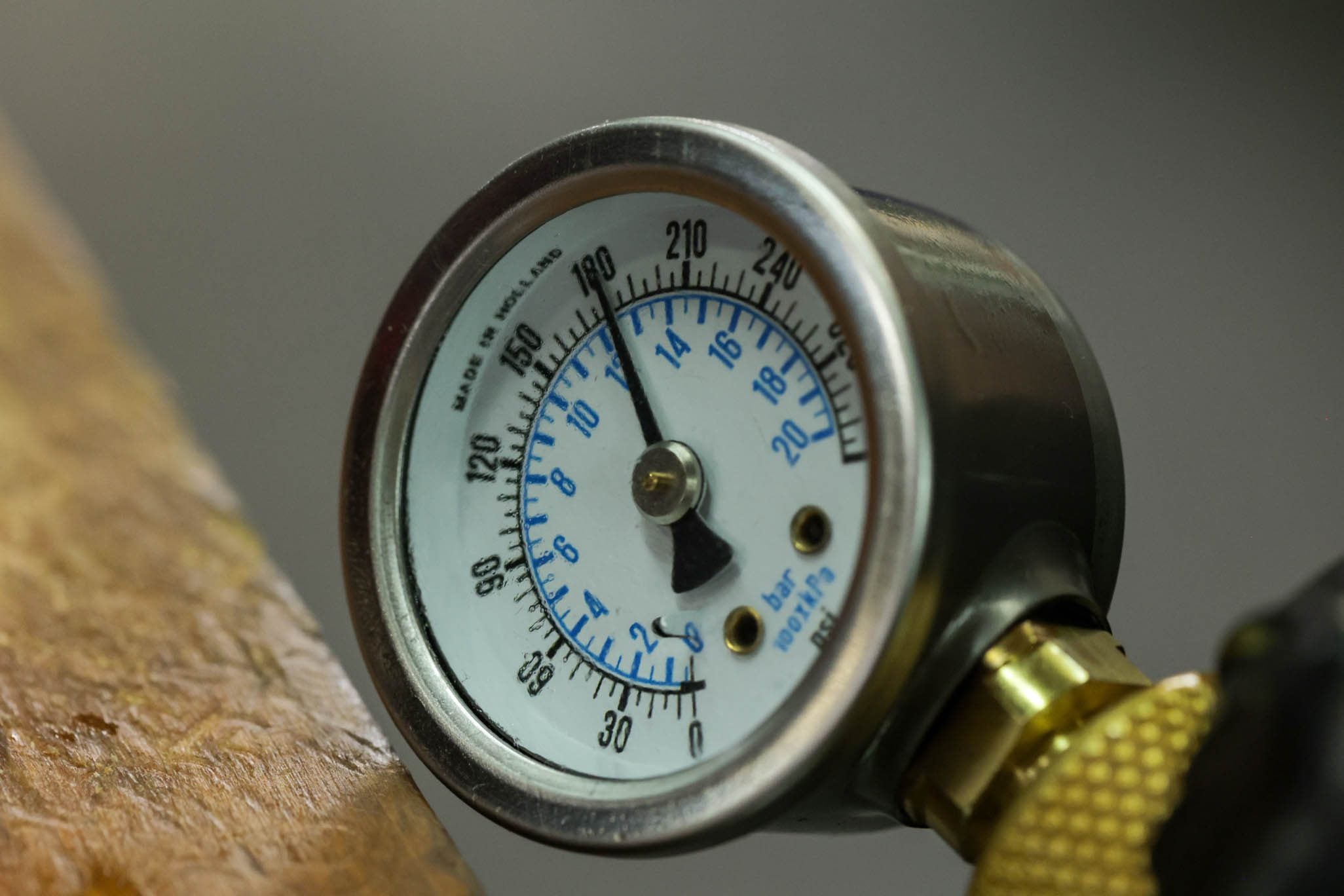
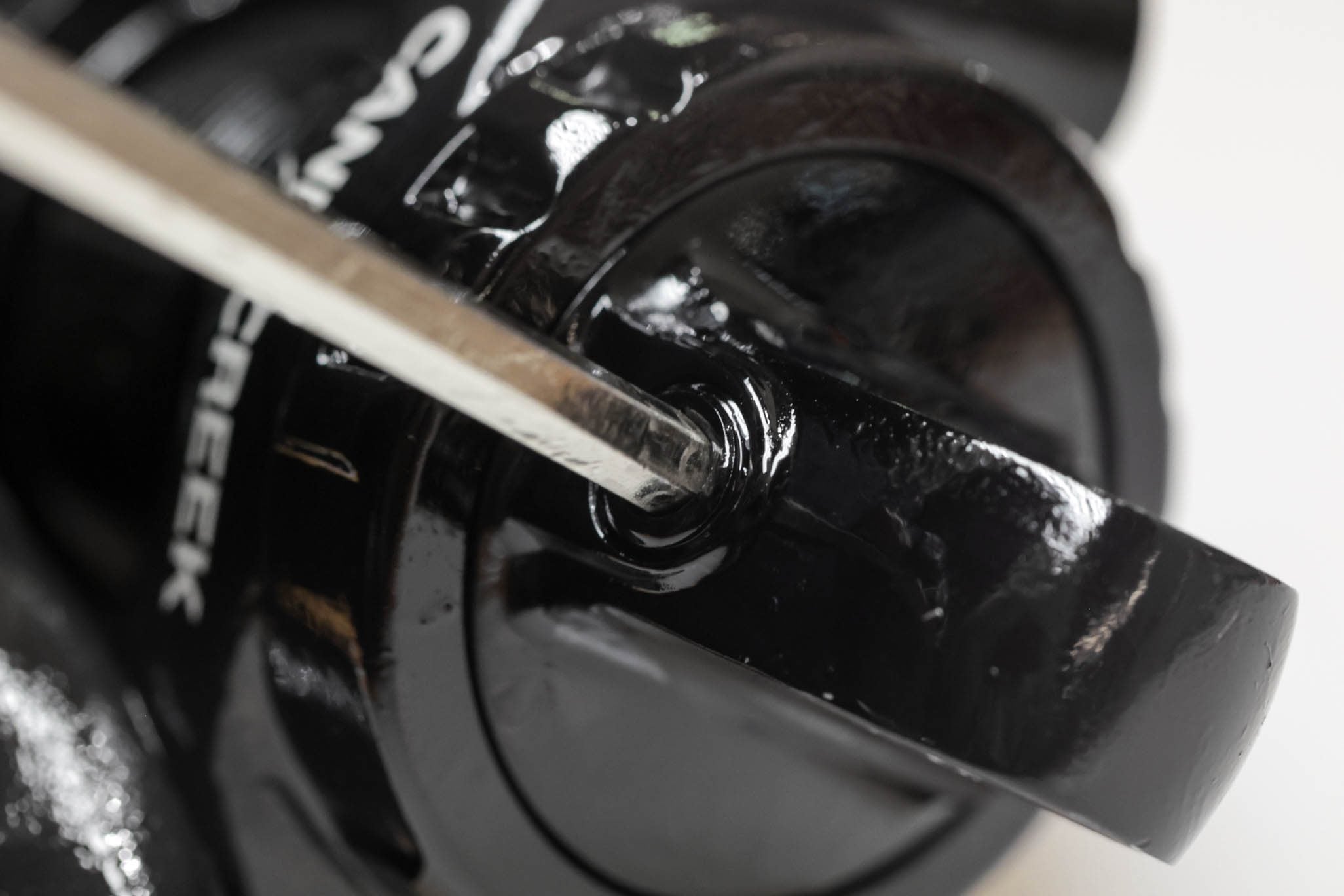

Step 4 – Nitrogen Fill
Insert gas fill needle (DBT016) and pressurize to 11-12 bars of nitrogen. Gently seat gas fill plug screw until plug starts to squeeze through access hole. Compress shaft and ensure proper gas by observing shaft return to full extension.

Insert Nitrogen Fill Needle (Standard)

Connect to Nitrogen Hose

Nitrogen Filled to Pressure

Seating Fill Plug Screw (Standard)

Compression Test

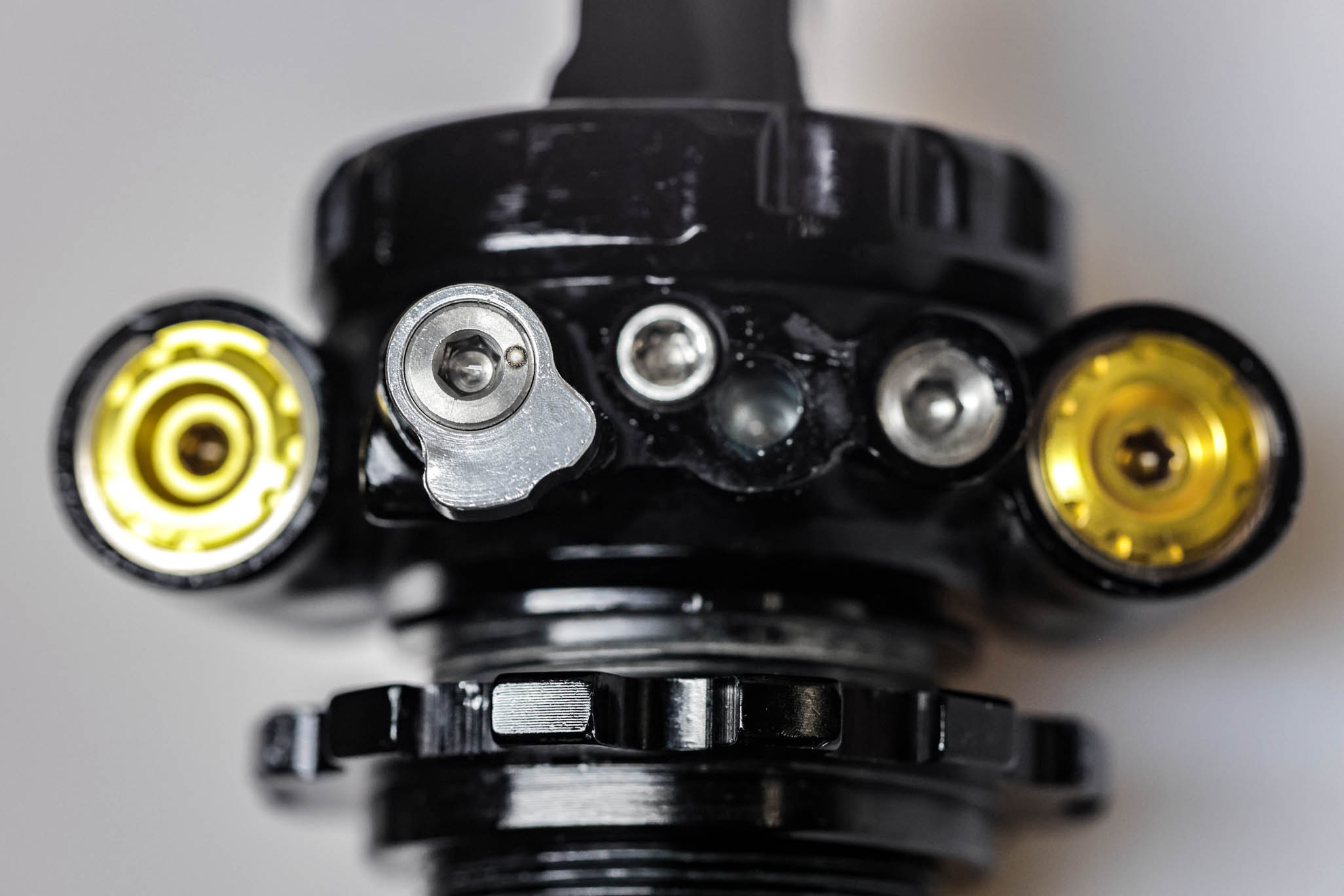
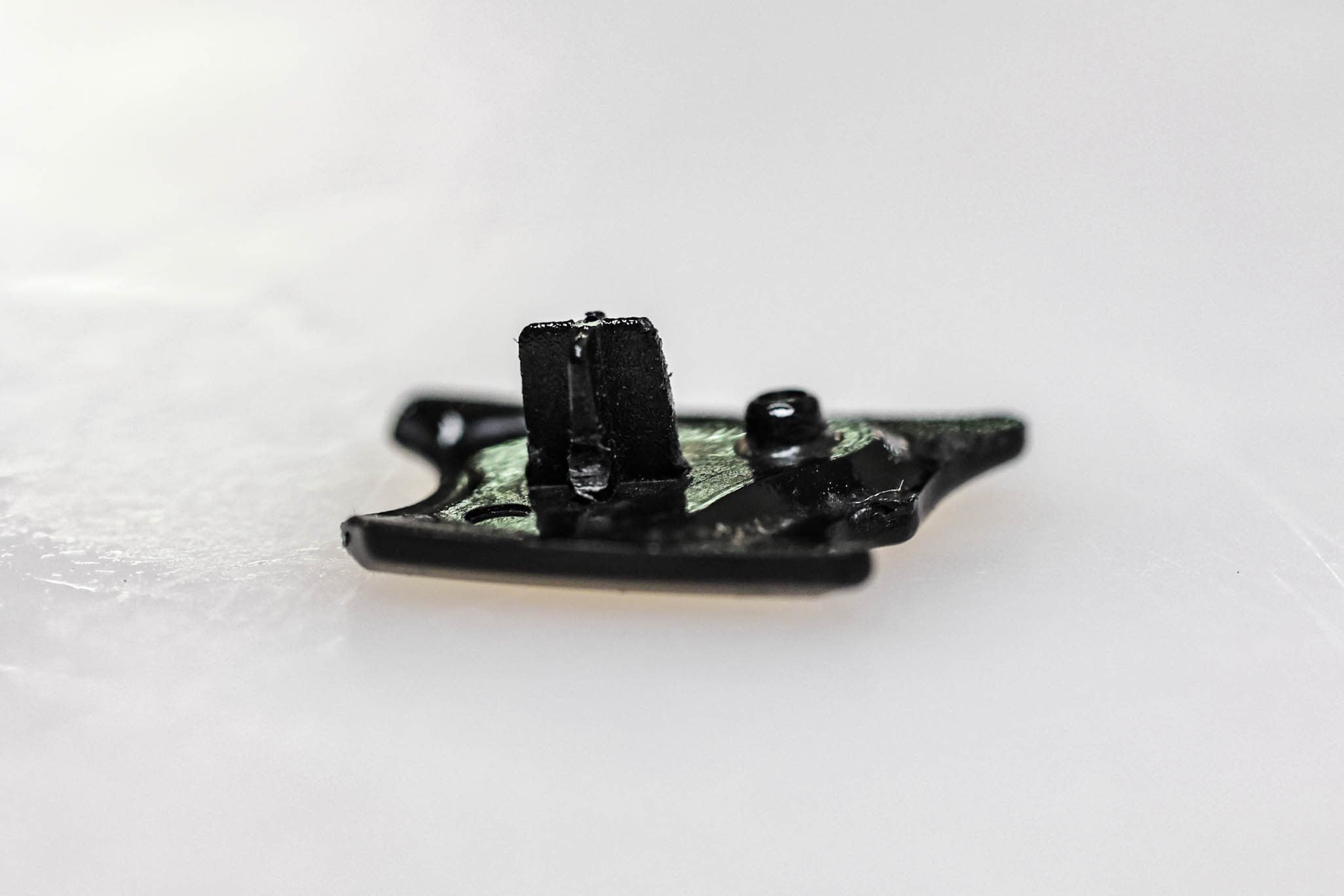

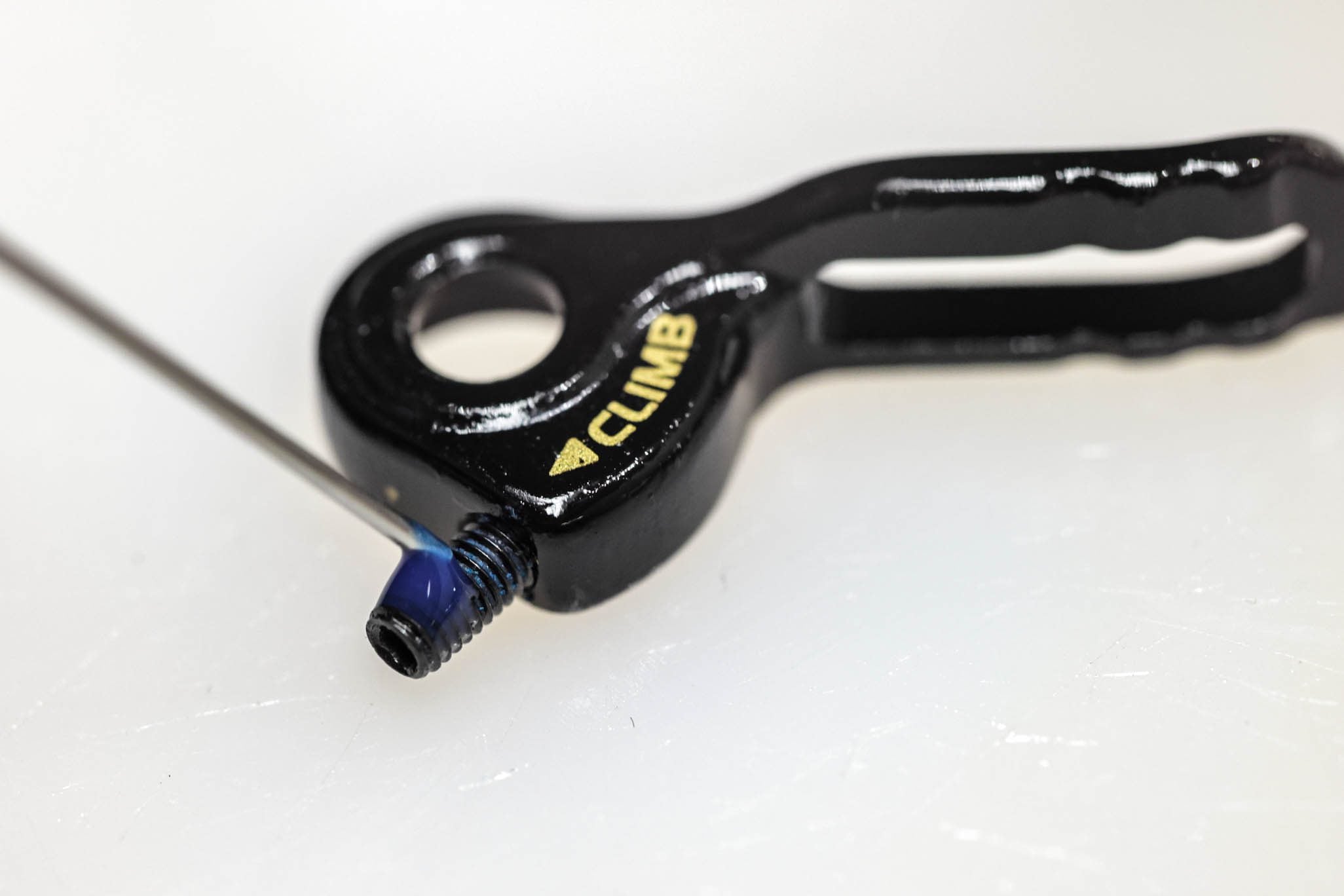

Step 5 – Leak Test & CS Install
Submerge valve body in water to check for gas leaks. Rotate spool valve to down position. Reinstall oil fill cover. Apply a drop of blue Loctite (243) to Climb Switch set screw. Install Climb Switch on spool valve and install set screw. Torque to .16 Nm with 1.5mm Allen.
If mechanical dyno equipment is available, run shock on dyno at this point.

Checking for Gas Leak

Spool Valve Orientation for Cover Install

Fill Cover Install

Oil Fill Cover Installation

Loctite on CS Set Screw

CS Install
Air Spring Reassembly











Step 1 – Air Piston Reassembly
Ensure inner and outer air cans, end eye, and piston are thoroughly cleaned. Grease piston quad ring channel. Thoroughly grease all sides of quad ring (AAD1928). Install quad ring on piston channel. Pre-compress back up L-rings (AAD1098) to improve fit on piston. Install back up L-rings on either side of quad ring, ensuring that flat side contacts quad ring. Lightly grease and install piston o-ring (AAD0955) on bottom side of piston.

Air Can & Piston Prep

Greasing Piston

Greasing Piston Quad Ring

Quad Ring Install on Air Piston

Quad Ring Installed

Pre-compressing Air Piston L-Ring

Air Piston L-Ring Install 1

Air Piston L-Ring Install 2

Air Piston O-Ring Install

Air Piston Assembled

Exploded Air Spring Assembly




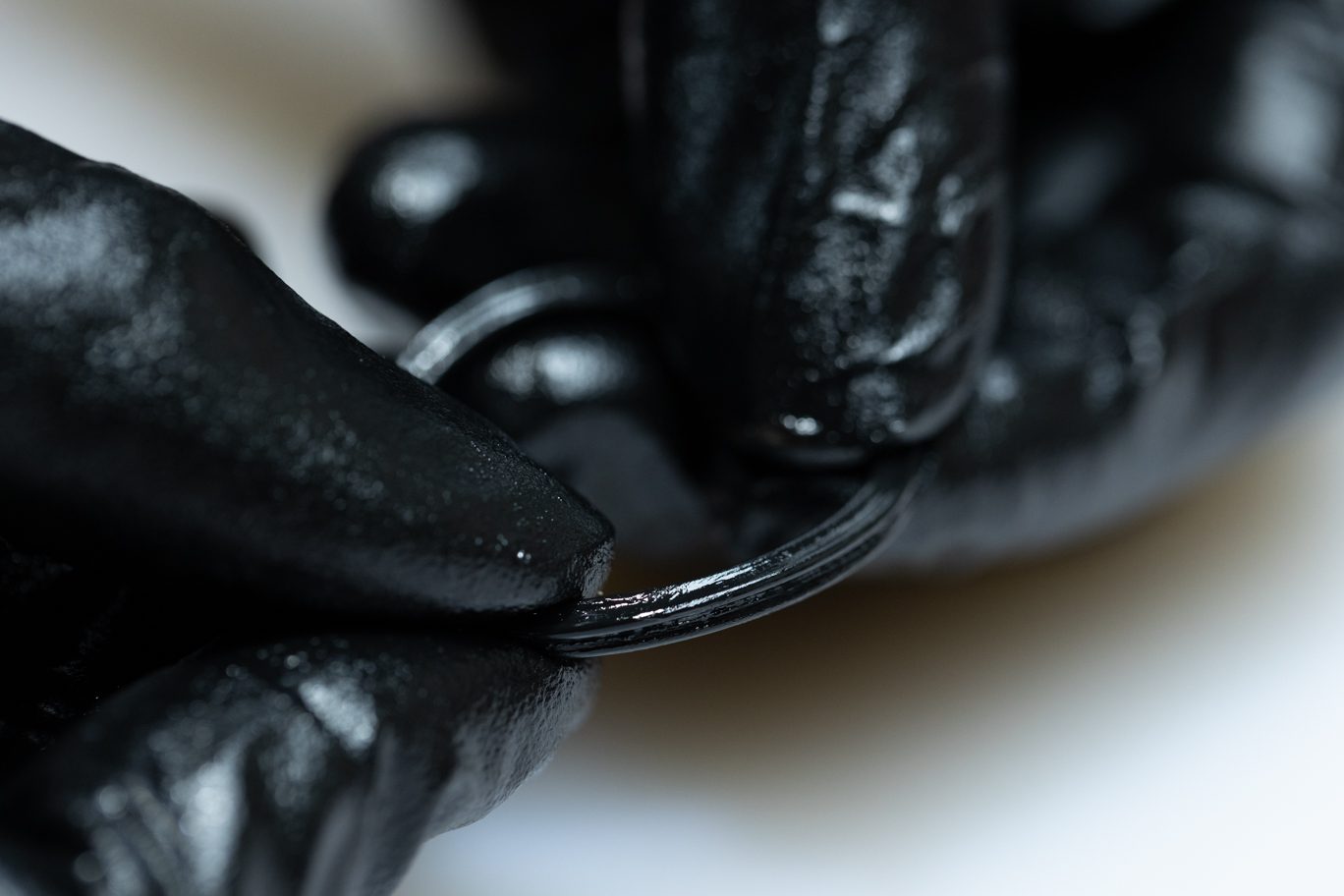



Step 2 – Inner Air Can Quad Ring Install
Grease lower channel on interior of inner air can. Install first L-ring (AAD1134) on lower shelf with flat side toward interior of channel. Thoroughly grease all sides of quad ring (AAD1846). Install quad ring into channel. Install second L-ring (AAD1134) on top of quad ring with flat side against quad ring.

Greasing Quad Ring Channel

Back Up L-Ring

First Air Can L-Ring Install

First Air Can L-Ring Installed

Greasing Quad Ring

Air Can Quad Ring Installation

Second Air Can L-Ring Install

Second Air Can L-Ring Installed





Step 3 – Inner Air Can Wiper & O-Ring Install
Install dry wiper seal (AAD0415) into top groove of inner air can. Thoroughly grease upper inner assembly of air can. Grease and install inner air can outer o-ring (AAD1218) on exterior of air can in the groove. Lightly grease the lower interior inner air can. Excess grease can clog charge port.

Air Can Wiper Installed

Greasing Upper Assembly

Greasing Air Can O-Ring

Air Can O-Ring Install

Inner Air Can Grease




Step 4 – End Eye & Outer Air Can Prep
Grease and install o-ring (AAD1218) into top groove on lower end eye. Insert stop shim (AAD1542) into end eye. Press into place below threads. Grease inner ridges of both ends on outer air can.

End Eye O-Ring Install

End Eye O-Ring Installed

End Eye Shim Install

Outer Air Can Grease





Step 5 – Inner Air Can Install
Clamp valve body end eye in vise or use Keith Cradle. Place Oil Seal Head Bullet (AAD1193 or AAD1182) onto shaft. Install sag indicator o-ring (.DB11108). Install inner air can. Gently work the can past the bullet tool onto the body with a slight rotation and even pressure.

Sag O-Ring Installed

Oil Seal Head Bullet & Air Piston Funnel

Oil Seal Head Bullet

Inner Air Can Install

Inner Air Can Installed








Step 6 – Air Piston Install
Thoroughly grease the exterior of air piston. Apply blue Loctite (243) to three air piston set screws. Place Air Piston Funnel (BAD1459) on inner air can. Set inner air can halfway on outer damper tube to allow for space to install air piston. Install piston with set screw holes facing out. Gently work piston past funnel into inner air can. Bottom piston onto seal head. Once flush with seal head, rotate inner can and piston to align screw holes with seal head threads. Install piston set screws. Torque to 3.2 Nm with T10.

Greasing Piston

Prepping Piston Set Screws

Air Piston Funnel on Inner Air Can

Proper Location of Inner Air Can

Air Piston Installed Through Funnel

Aligning Air Piston w/ Seal Head

Piston Set Screws Install

Piston Set Screws Installed





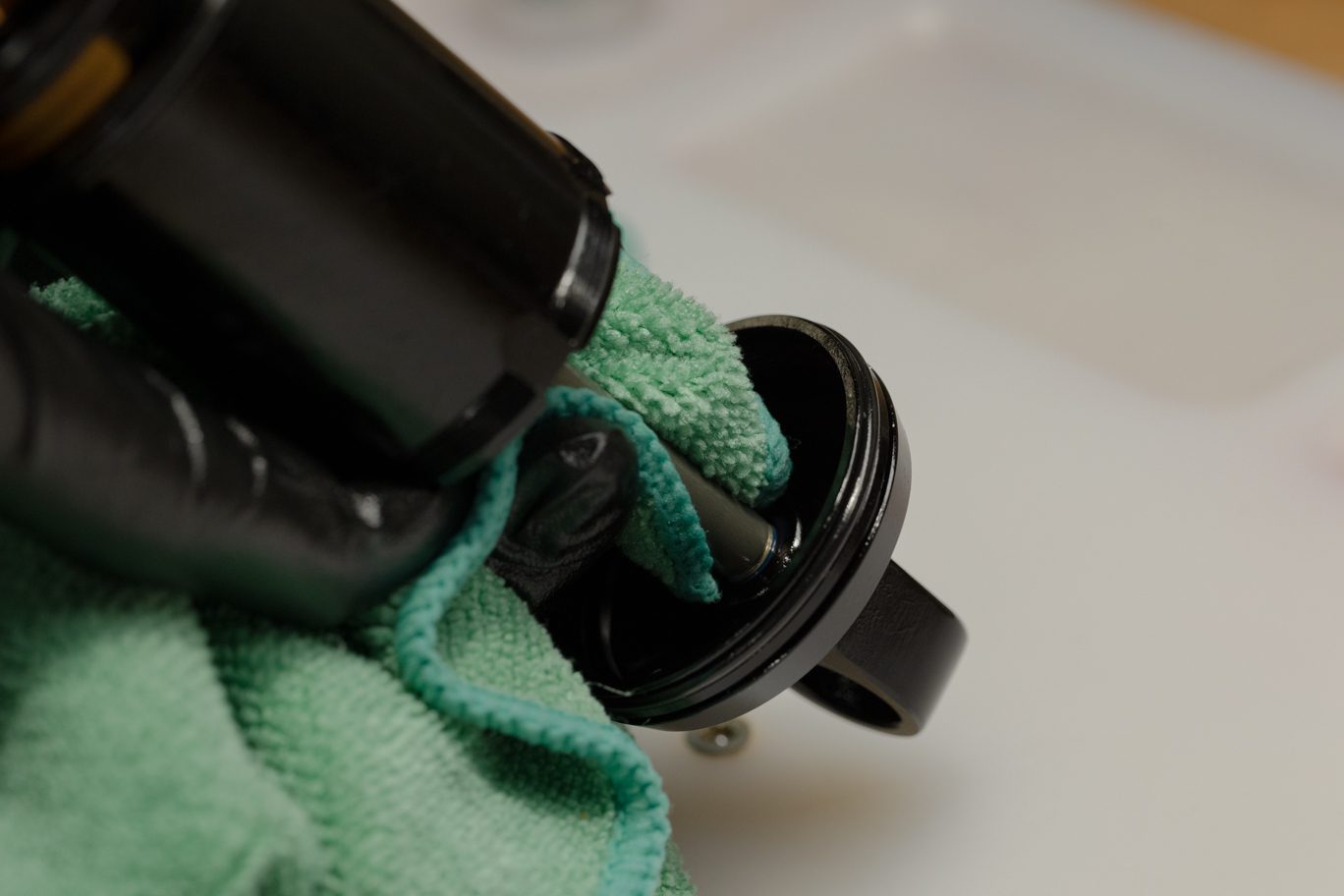
Step 7 – End Eye Install
Reinstall bottom out bumper, shim and stroke reduction (if present). Apply blue Loctite (243) to shaft threads and end eye threads. Thread end eye onto the shaft. Clamp shaft into vise with shaft clamp allowing space for end eye to clear vise when tightened. Using 1/2″ crowsfoot, torque end eye to 4.8 Nm. Clean any extra Loctite from shaft and end eye.

Bottom Out Bumper & Stroke Reduction Installed

Applying Loctite to Shaft

Threading Shaft to End Eye

Clamping Shaft w/ Ample Space

Torquing End Eye

Cleaning Shaft & End Eye of Loctite
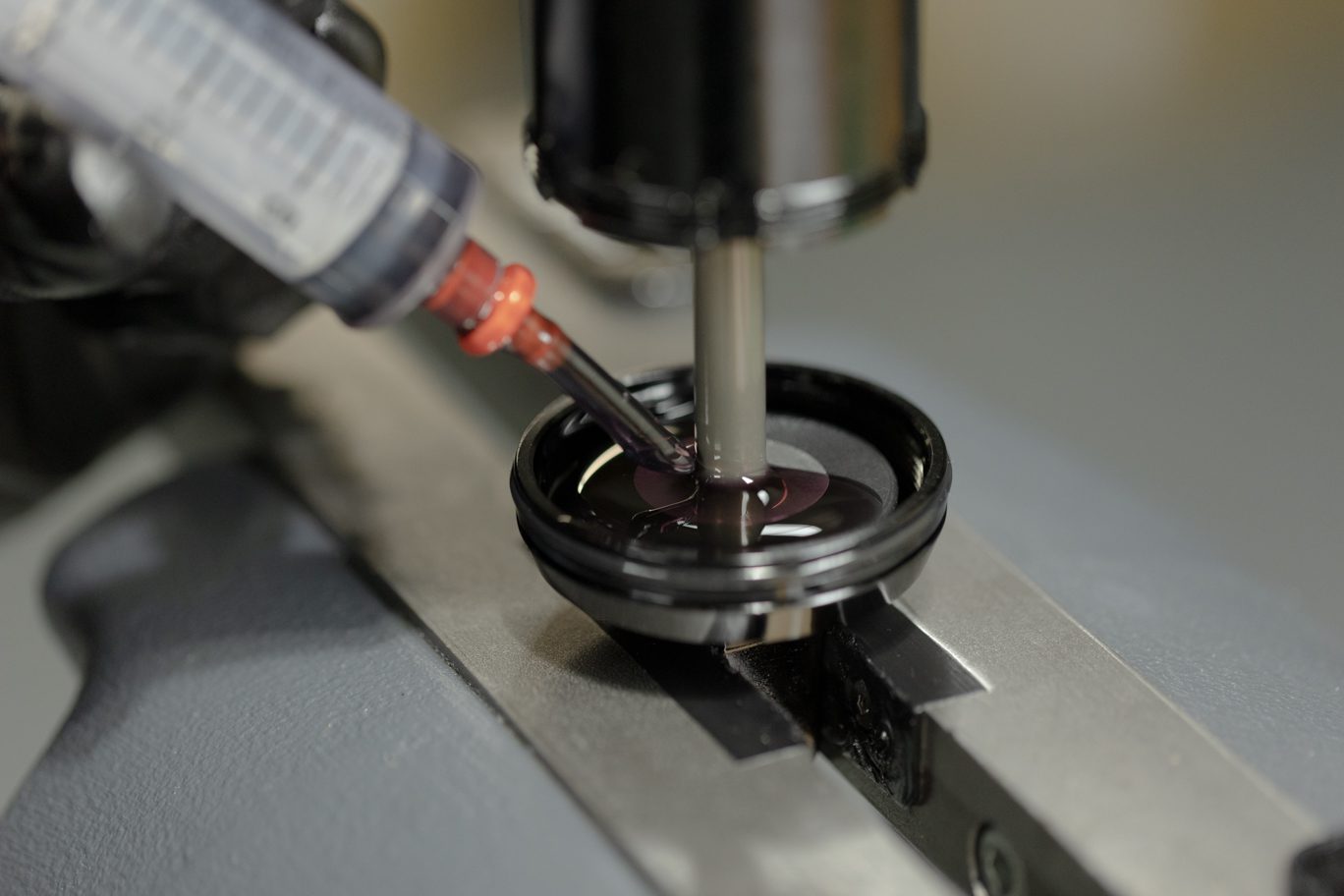
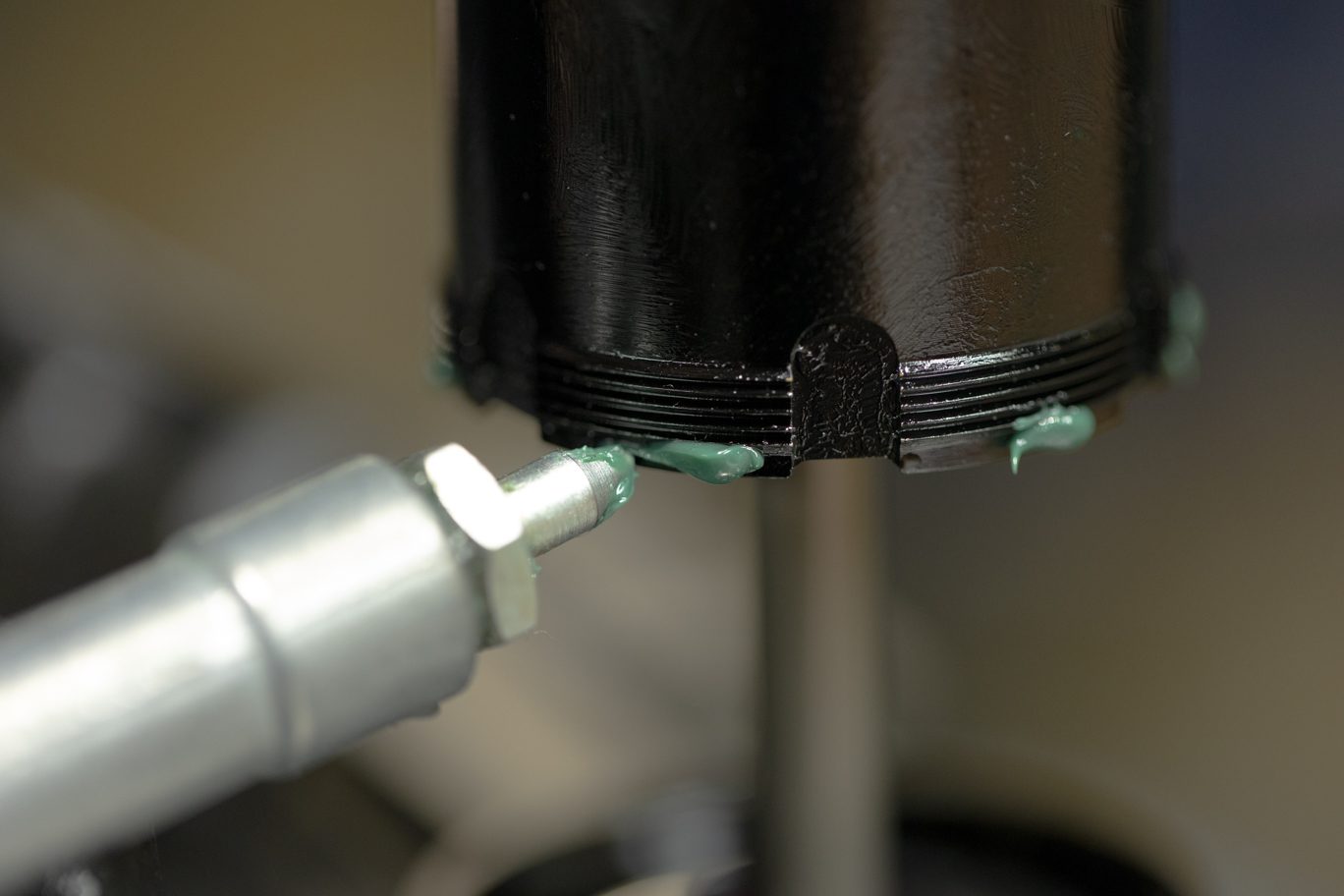
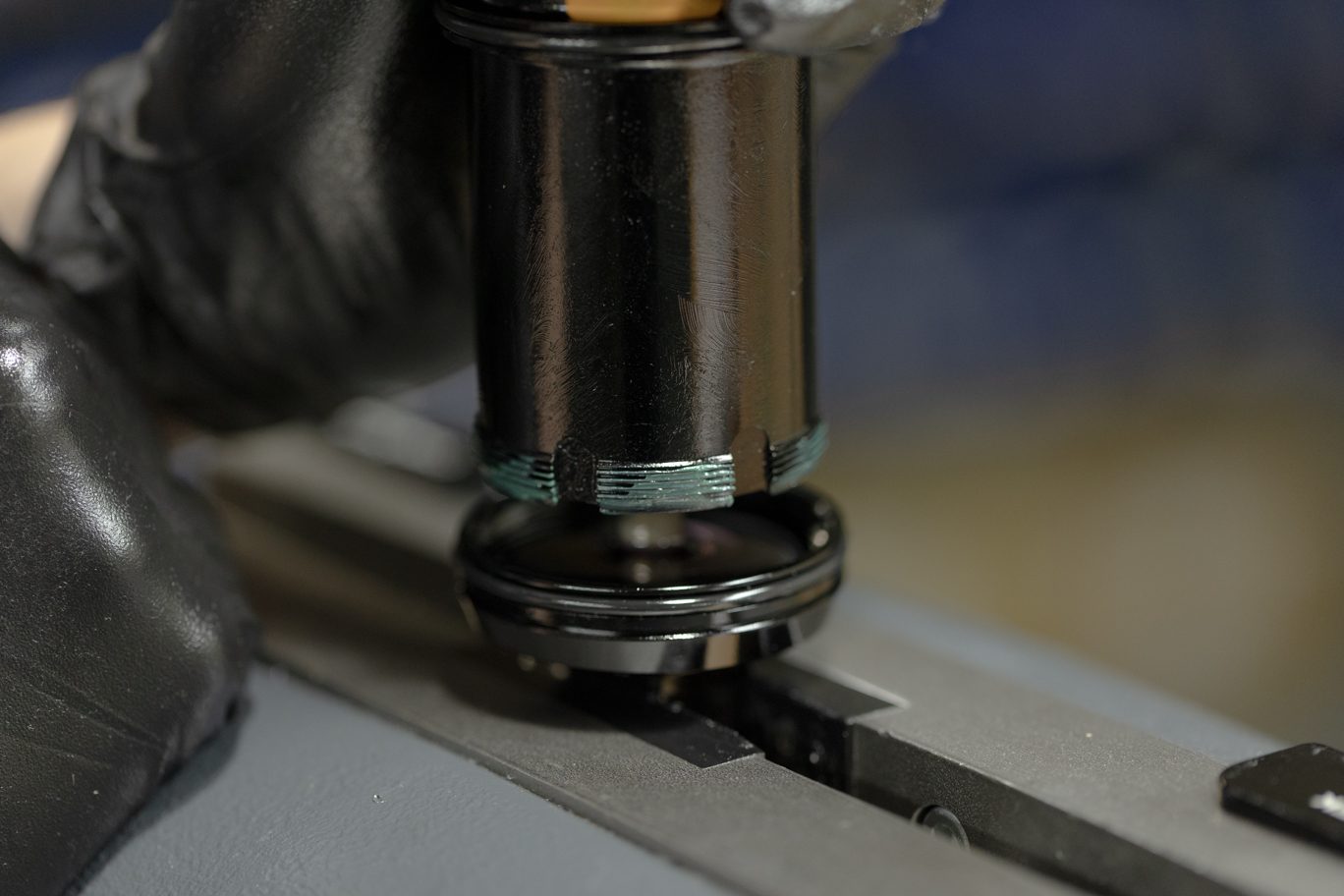


Step 8 – Inner Air Can to End Eye Install
Clamp end eye in vise. Add 5 ml of Royal Purple to end eye. Add PolyLube grease to threads on inner air can. Thread inner air can onto end eye. Torque to 22.6 Nm using Air Seal Head tool.

Adding Oil to End Eye

Adding PolyLube to Inner Air Can

Lowering Inner Air Can onto End Eye

Inner Air Can Threaded onto End Eye

Torquing Inner Air Can




Step 9 – Outer Air Can Install
Clamp valve body end into vise. Work outer air can gently past o-rings. Note correct orientation of air can and reinstall any volume reduction. Final o-ring will be tight. Strap wrench may be necessary. Engage Climb Switch to aid installation. Ensure valve is oriented away from Climb Switch. Install outer air can retention clip.

Outer Air Can Installed Past First O-Ring

Outer Air Can Installation Past Second O-Ring

Outer Air Can Retention Ring Install

Outer Air Can Retention Ring Installed
Final Testing and Set Up







Step 1 – Leak Check
Air up shock to at least 100 psi. On hand dyno or bike frame, slowly cycle shock and listen for negative volume chamber to pressurize. Using soapy water and dunk tank, test for any possible air leaks. Install valve cap.

Airing Up Shock

Soap Test 1

Soap Test 2

Soap Test 3

Soap Test 4

Cycling Shock on Hand Dyno

Dunk Test





Step 2 – Dyno Test
Set adjusters to factory neutral: HSC & HSR 2.5 turns from full bottom (or 2 turns from full open); LSC 11 clicks from full bottom; LSR 13 from full bottom. Using hand dyno, test shock for function. Ensure Climb Switch engages and operates properly. Turn individual adjusters to test each one. Set back to original tune if desired.
Install any bushings and hardware.

Setting HSC

Setting LSC

Setting LSR

Setting HSR


